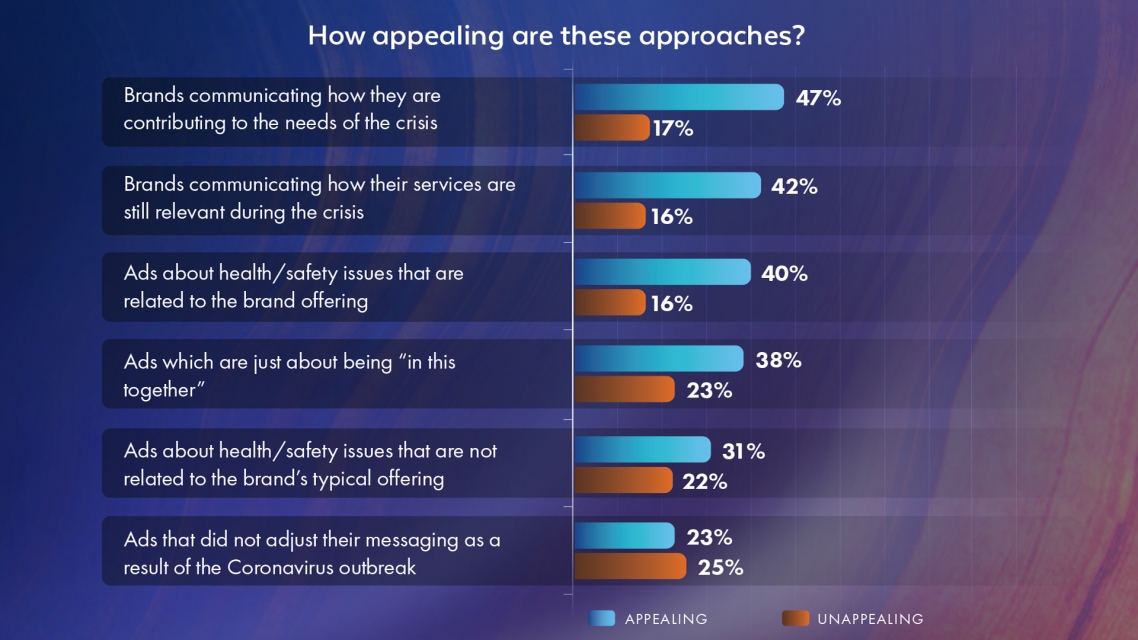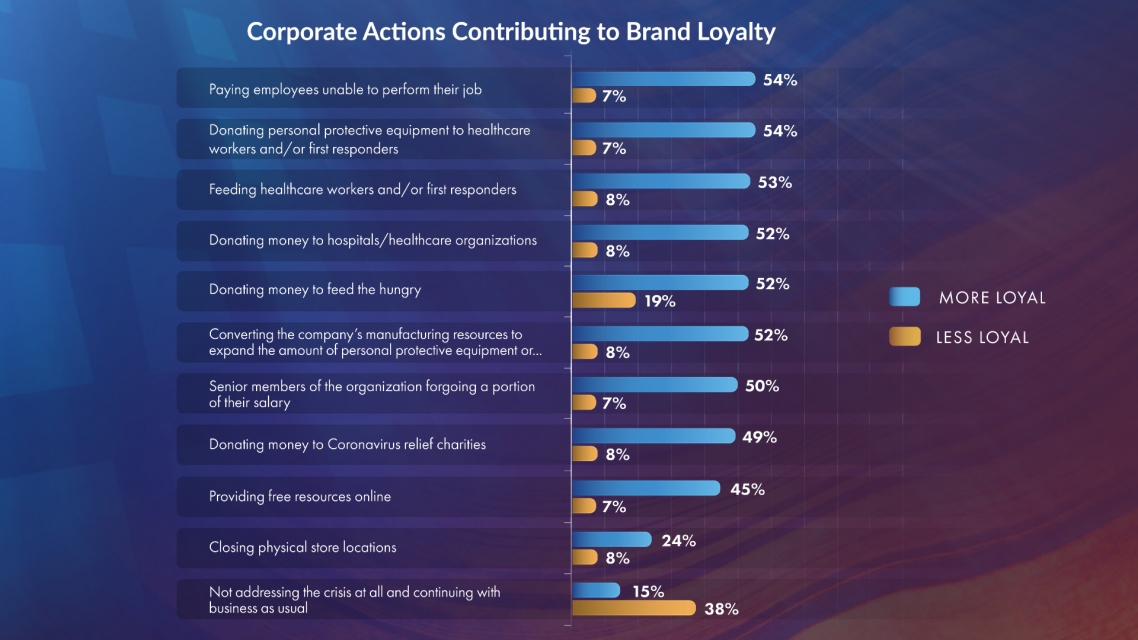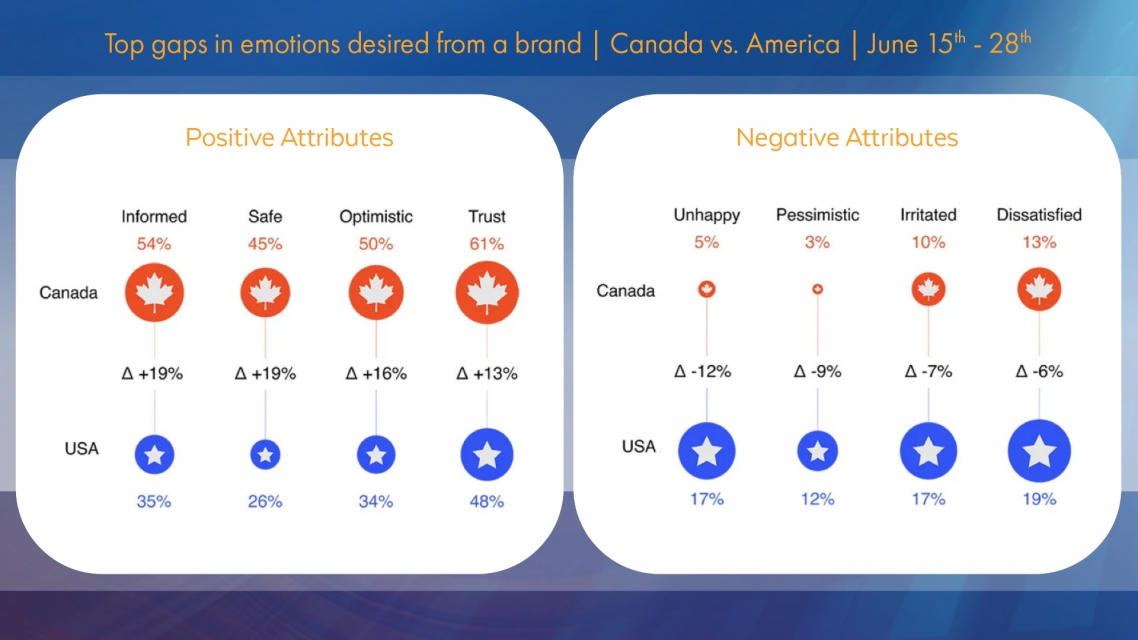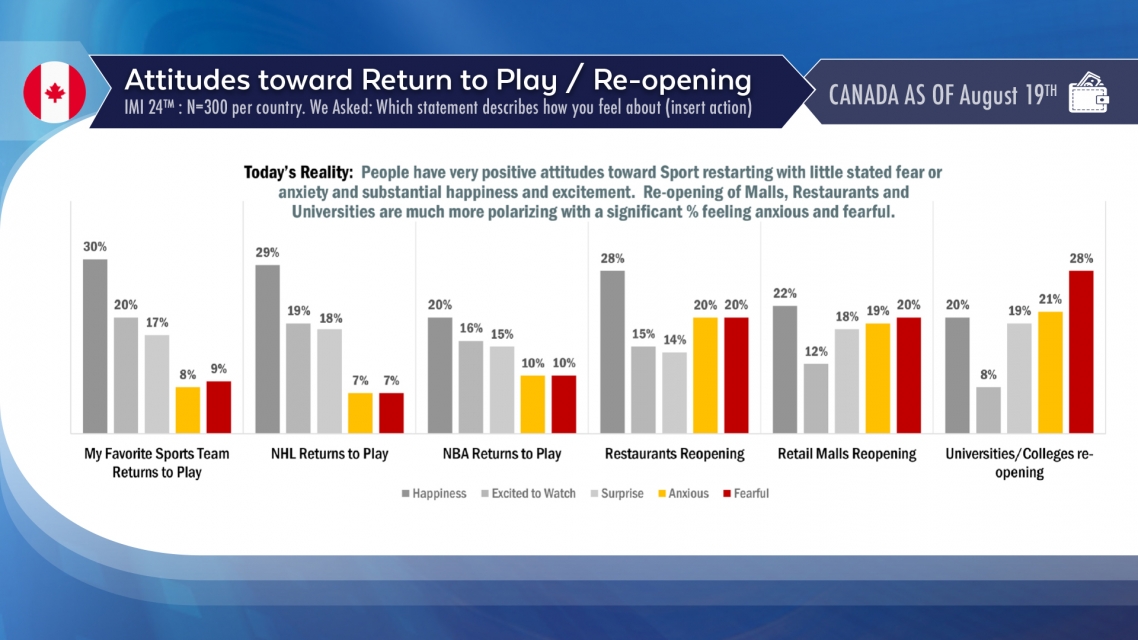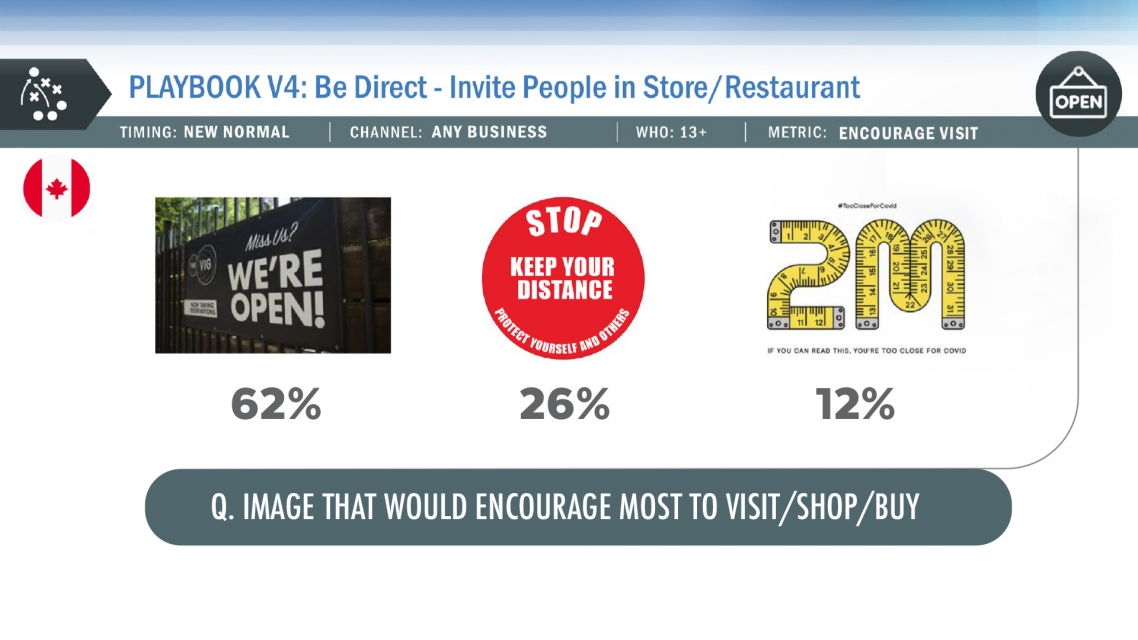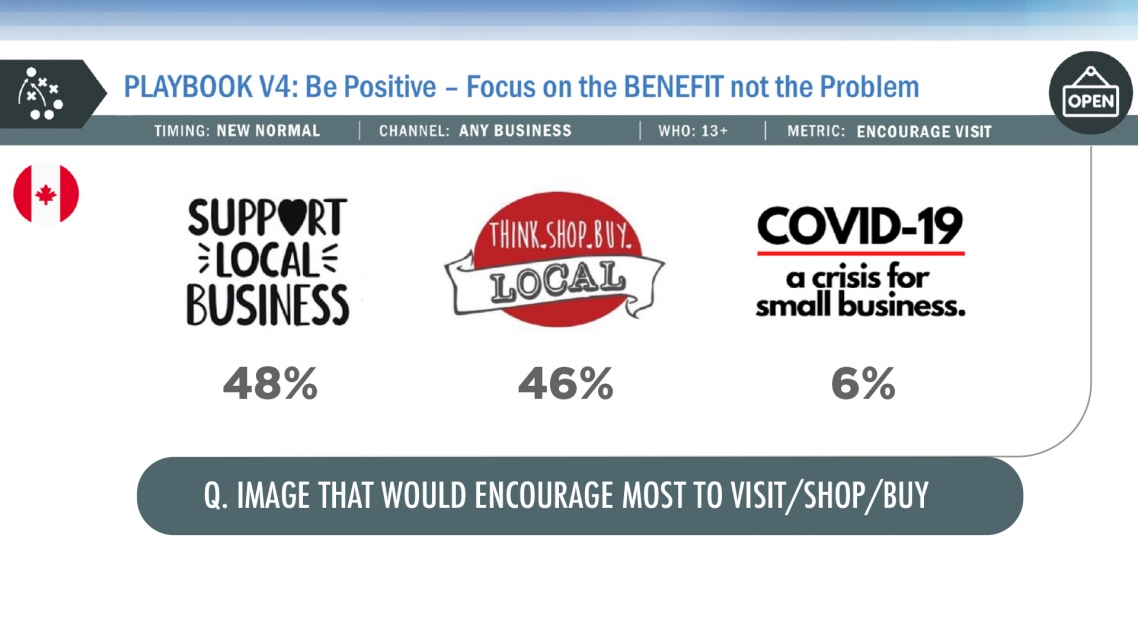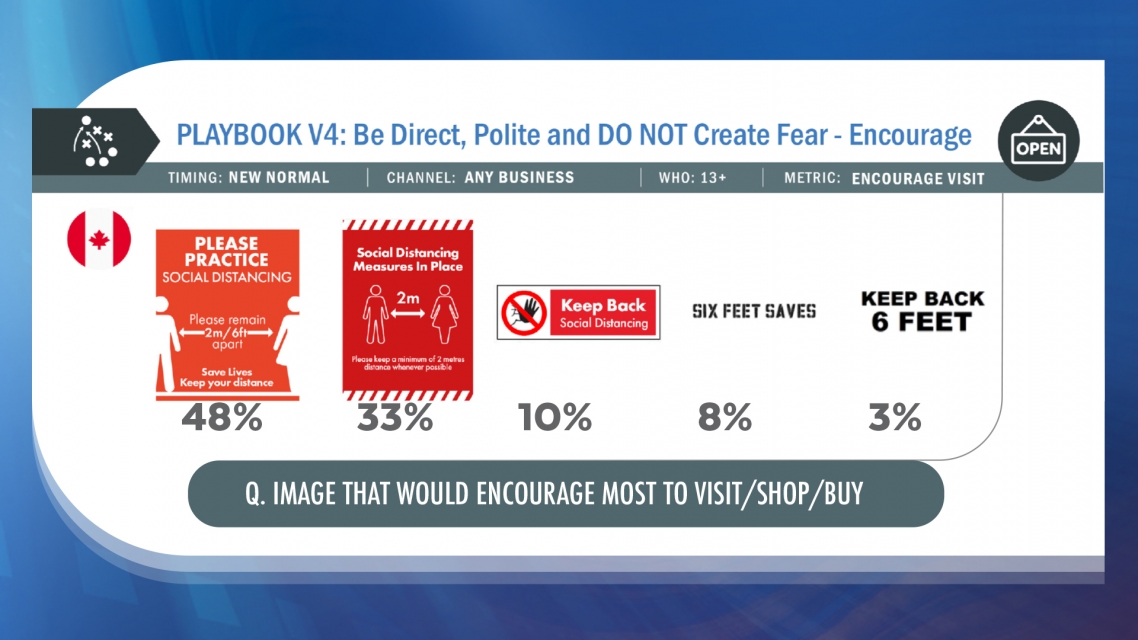PATTISON PERSPECTIVES
PATTISON Research | Consumer Sentiment POV
As the COVID-19 pandemic situation has evolved, brands have worked to remain relevant to consumers while still presenting compassion and sensitivity with their messaging. A consumer’s purchase path can be greatly influenced by the tone and emotion that comes through advertising. In a period of crisis, consumers are looking for brands to understand their needs and actively show how they will contribute during these tumultuous times.
RESPONSE TO ADVERTISING MESSAGING
A global study by Dynata found that 48% of consumers said it is fine for brands to continue advertising during the pandemic, with only 11% disagreeing with that statement. Getting the right message across can be a challenge for brands, as sensitivity around advertising during this time can lead to lasting effects in a consumer’s perceptions.1
When asked which messages have resonated most, 47% say ads communicating how the brand is contributing to the needs of the crisis were most appealing. Ads about health/safety outside of the brands typical offering and ads that had no adjustment at all to their messaging suffered the lowest scores on appeal.1
During the crisis, many brands have responded by contributing to the community effort, introducing initiatives focused on supporting frontline workers and providing relief funds. These efforts have shown that they resonate strongly with consumers. Actions that directly assisted with relief efforts, such as donating PPE, money, and food to healthcare workers and first responders, were some of the strongest promoters of brand loyalty globally.1
Efforts to engage with the consumer directly and provide them with some relief during this time, such as providing free online services (i.e. at-home workouts, educational materials, etc.) can promote loyalty as well. 45% of consumers indicated that providing these free services would make them more loyal to a brand.1
Again, ignoring the crisis is one of the most ill-advised moves a brand can make during this time. Nearly 2 in 5 consumers said it would negatively impact their loyalty to a brand if they took no social action during the pandemic.1
Canadians are looking for brands to show them support and positivity during these trying times. A study from Level 5 Strategy has shown that consumers are most interested in brands conveying positive attributes through their messaging – such as being informed, and displaying safety, optimism, and trust.2
Interestingly, our neighbours to the south are much less interested in this positive messaging. While Americans still appreciate the positivity, they are much more content with negative emotions associated with COVID messaging. Understanding these subtle differences in desires is incredibly important for brands participating in both marketplaces. Conveying the appropriate emotional response is more necessary than ever to remain relevant in the eye of the consumer.2
RESPONSE TO REOPENING
As the world begins to reopen and Canadians are able to reconnect with entertainment and amenities put on hold during the pandemic, there is some hesitancy. In an IMI International study, when asked how they felt about sports returning, Canadians were very positive, with ratings of happiness and excitement most popular, and few feeling anxiety or fear. In regards to activities a bit closer to home, such as restaurants, retail malls, and schools opening, a much more polarizing effect is seen. About one in five said they were happy to see these places reopen, while nearly twice as many Canadians felt anxious and fearful.3
Overall Canadians are more readily open to the idea of distant pleasures being restored, while local community reopening involving large gatherings still arouses feelings of uncertainty and caution.
RESPONSE TO SIGNAGE & PACKAGING
COVID-19 has shaped our view towards a new normal: one of heavy precautions and warnings. Retailers and businesses are working towards presenting these images of safety and appropriate precautions while still encouraging Canadians to return to their storefronts.
A study from IMI International presented respondents with various messaging and asked them to rate which would encourage them the most to visit or shop in a location, or purchase a product. When rating signage out front, Canadians responded most to invitations or ‘soft messaging’ rather than harsher reminders of physical distancing. Over 3 in 5 Canadians agreed that the “Miss Us? We’re Open!” signage was the most appealing.3
In regards to encouraging support for local businesses, a focus on the benefit of the purchase rather than the problem of the pandemic was more appealing to Canadians. Respondents were spilt between the two positive messages “Support Local Business” and “Think. Shop. Buy. Local” and vastly preferred them to the negative, “COVID-19 a crisis for small business.”3
When displaying signage for physical distancing specifically, Canadians respond most to ‘polite’ rather than ‘fearful’ messaging. Incorporating ‘please’ into the messaging rather than giving orders creates a large difference in preference. Both signs utilizing this messaging were popular among Canadians.3
KEY TAKEAWAYS
The most important takeaway is for brands to be aware of the collective emotions of the public. Responding in a way that clashes with a consumer’s expectations has the potential to negatively impact the brand well beyond the timeline of the pandemic. Canadians are looking for support from brands and for messaging to uplift them, rather than focusing on the negatives of the situation.
When communicating with consumers directly, a conversational tone is greatly preferred. Canadians are looking to be engaged with, rather than be given orders. Direct messaging is appreciated, but should be paired with ‘polite’ or ‘soft’ encouragements.
As the pandemic situation evolves, brands need to ensure that they continue to adapt. Ignoring the situation entirely and refusing to engage with the community’s needs can be detrimental to a brand’s standing in the eyes of the consumer. The opportunity emerges for a brand to establish itself as a leader in the community, responding swiftly and directly to changes in the marketplace and within the emotions of the populace.
Sources:
1 Dynata. Advertising in the New Normal. Walking a Fine Line: Brand Messaging During the Crisis. May 2020.
2 Level 5 Strategy. Is Your Strategy Still Relevant? How COVID-19 Has Changed Customers’ Drivers of Choice. August 12, 2020. https://level5strategy.com/is-your-strategy-still-relevant-how-covid-19-has-changed-customers-drivers-of-choice/
3 IMI International. Wave 9: Global Recovery & Playbook V4. August 20, 2020.

